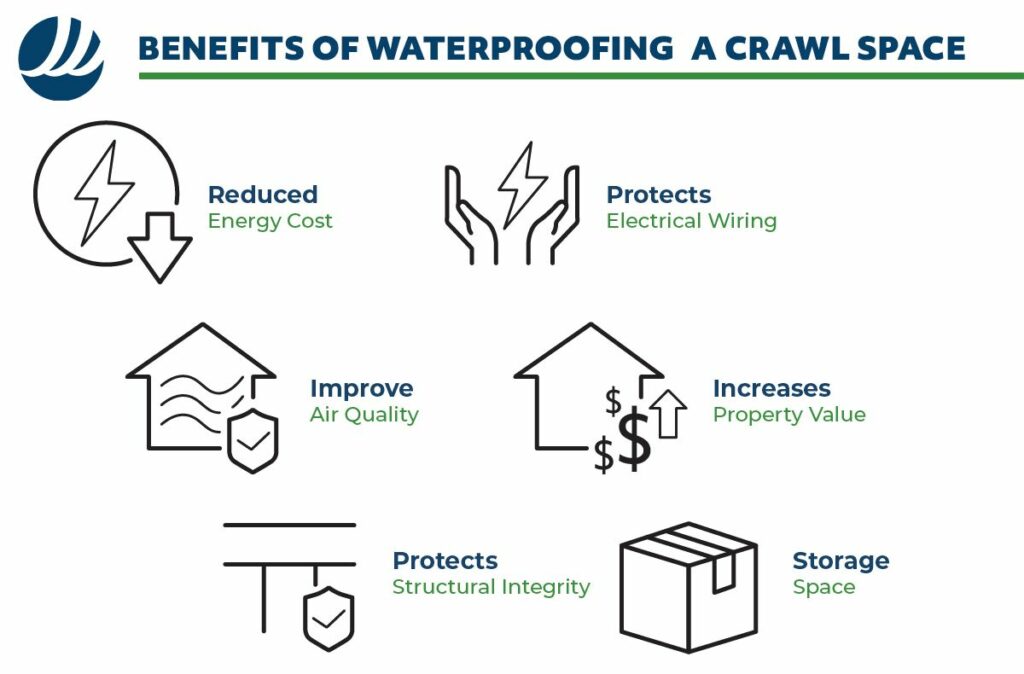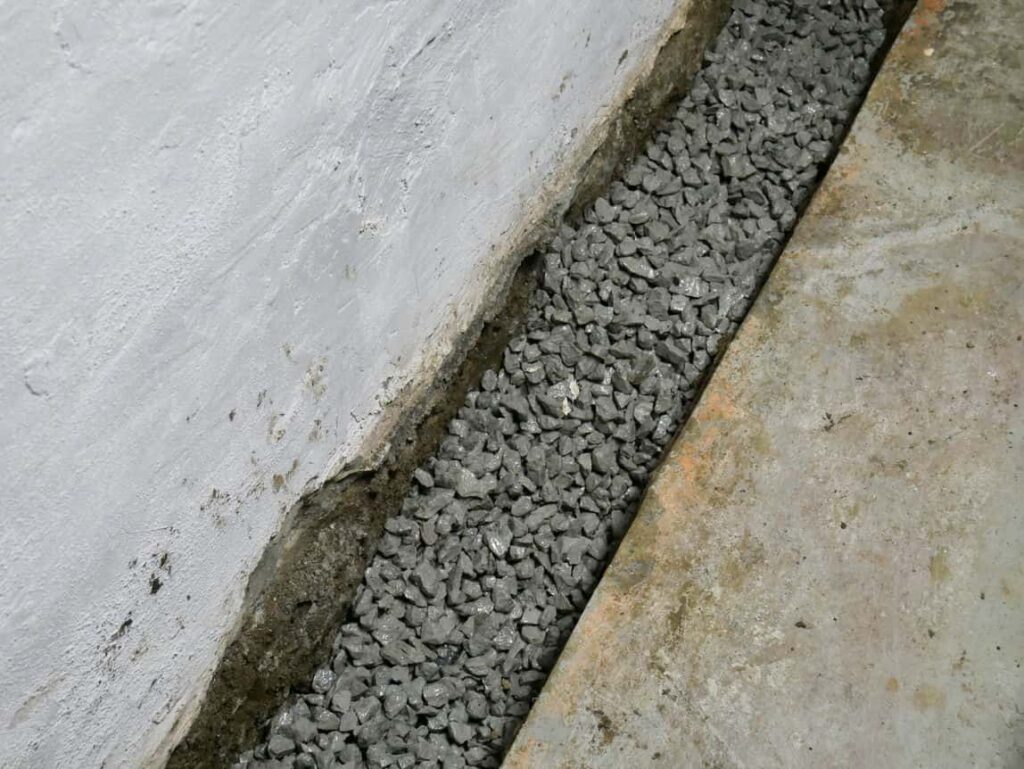
Wondering if you need crawl space waterproofing? You probably do unless you live in an arid area. You know, like a desert.
Water is something you don’t want in your home’s crawl space because it’s bad for your foundation. Moisture contributes to wood rot and attracts wood-eating pests. As wood rot and termites work on your beams and joists, your floor will eventually weaken, leading to expensive repairs.
A wet crawl space is also the perfect petri dish for mold. Since a certain percentage of air from the crawl space flows up and into your home’s living area, you want the crawl space to be clean and dry, not full of mold spores and other allergens.
This article will go over the benefits of waterproofing a crawl space, how crawl space waterproofing is done, signs you might need your crawl space waterproofed, and more.
Benefits of Waterproofing a Crawl Space
The benefits of waterproofing a crawl space include:
- Reduced energy costs – A dry crawl space means lower humidity inside your home. Since dry air is less expensive to heat and cool, this reduces your energy cost.
- Improved indoor air quality – A certain percentage of air from your home’s crawl space flows up and into your living area. Therefore, if your crawl space is full of mold, the air entering your living area from the crawl space will contain mold spores. Moldy air could cause trigger allergies and other respiratory problems for anyone living in the home.
- Protects your home’s structural integrity – Wet crawl spaces encourage wood rot and wood-eating pests. Both can damage the crawl space’s wood structures, leading to sagging and a costly repair.
- Protects your home’s electrical wiring – Crawl spaces provide easy access to a home’s wiring and plumbing. However, you don’t want wet electrical wiring because it could start a fire. A dry crawl space means a reduced chance of fire.
- Increases your home’s property value – Buyers love clean, dry crawl spaces.
- You can use your crawl space for storage – While we don’t recommend you use an encapsulated crawl space to store valuables. It is a good storage option for holiday decorations, tools you don’t use very often, etc.
For more information about moisture and foundations, see Don’t Make These 6 Mistakes When Landscaping Around Your House’s Foundation.
The Crawl Space Waterproofing Procedure
Crawl space waterproofing involves digging a sump pit and excavating around the foundation down to the level of the footer. A shallow trench is created and lined with gravel. A perforated drainage pipe is then placed in the trench and covered with more gravel. Finally, the excavated soil is put back.
Excess water in the soil around the foundation will now flow into the drainage pipe and be directed to a sump pit. When the sump pit fills with water, a sump pump kicks in and releases the water away from the foundation. The water could be released without using a sump pump, if the grading around your home permits it.
Kick It Up a Notch With Crawl Space Encapsulation
Crawl space encapsulation involves covering the floor and walls of the crawl space with a thick vapor barrier. After the seams are sealed, the crawl space’s dirt floor is sealed off, and the result is a clean crawl space suitable for storing certain items. Adding a dehumidifier ensures that moisture can’t build up in the crawl space. For more information, see Crawl Space Vapor Barriers.
Signs Your Home’s Crawl Space Needs Waterproofing
Signs your home might need crawl space waterproofing include:
- Pooled water in the crawl space
- Wet soil
- Your home smells musty
- There’s visible mold in your crawl space. You might also see mold growing on your baseboards or wood floor.
- You have a pest problem. Pests – insects, rodents, etc. – that get into your crawl space can eventually make their way up into your home’s living area.
- There’s rust on the pipes or ductwork in your crawl space.
- There’s wood rot on the wooden structures in the crawl space
Crawl Space Waterproofing Cost
The cost of crawl space waterproofing depends on various factors including your geographical location and the size of the crawl space. The only way to know for sure how much it will cost to waterproof your crawl space is to contact a foundation repair contractor with experience waterproofing crawl spaces and ask for a repair estimate.
What About DIY Crawl Space Waterproofing?
We don’t recommend homeowners attempt DIY crawl space waterproofing. It’s hard work and requires a crew to get the job done quickly. Also, crawling around in an unwaterproofed, un-encapsulated crawl space can be dangerous. You might encounter pests, including rodents or snakes, airborne mold spores, dangerous animal droppings, sharp items on the crawl space floor, etc. Never venture into an unwaterproofed, un-encapsulated crawl space without protective gear, including a respirator.
When you hire a professional to waterproof your crawl space, you know it will be done properly, more quickly, and come with a warranty. (Never hire anyone to waterproof your crawl space that doesn’t offer a warranty.)
If you believe – based on the above signs – that your home needs crawl space waterproofing and you’re in our service area in Kansas City, MO, contact us today for a free inspection and repair estimate.












